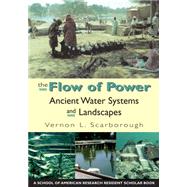
What is included with this book?
| List of Illustrations | xi | ||||
| Acknowledgments | xv | ||||
| 1 Water, the Fundamental Resource | 1 | (8) | |||
|
2 | (2) | |||
|
4 | (5) | |||
| 2 The Organizing Concepts of Water Work | 9 | (8) | |||
|
11 | (2) | |||
|
13 | (1) | |||
|
13 | (4) | |||
| 3 Contemporary Thought and Recent Intellectual History | 17 | (22) | |||
|
19 | (7) | |||
|
19 | (1) | |||
|
20 | (1) | |||
|
21 | (3) | |||
|
24 | (1) | |||
|
25 | (1) | |||
|
26 | (4) | |||
|
26 | (2) | |||
|
28 | (1) | |||
|
29 | (1) | |||
|
30 | (3) | |||
|
33 | (5) | |||
|
33 | (2) | |||
|
35 | (3) | |||
|
38 | (1) | |||
| 4 Engineering the Landscape for Water Management | 39 | (40) | |||
|
39 | (1) | |||
|
40 | (3) | |||
|
41 | (1) | |||
|
42 | (1) | |||
|
43 | (36) | |||
|
43 | (4) | |||
|
47 | (17) | |||
|
47 | (7) | |||
|
54 | (10) | |||
|
64 | (27) | |||
|
65 | (4) | |||
|
69 | (10) | |||
| 5 Nonagricultural Aspects of Water Management | 79 | (12) | |||
|
79 | (1) | |||
|
80 | (2) | |||
|
82 | (1) | |||
|
82 | (1) | |||
|
83 | (1) | |||
|
84 | (7) | |||
| 6 Economic Outlays and Political Risks of Water Management | 91 | (16) | |||
|
91 | (2) | |||
|
92 | (1) | |||
|
92 | (1) | |||
|
93 | (3) | |||
|
94 | (1) | |||
|
94 | (2) | |||
|
96 | (3) | |||
|
99 | (3) | |||
|
102 | (1) | |||
|
103 | (4) | |||
| 7 Archaeological Case Studies-New World | 107 | (26) | |||
|
108 | (7) | |||
|
110 | (2) | |||
|
112 | (1) | |||
|
112 | (2) | |||
|
114 | (1) | |||
|
115 | (9) | |||
|
117 | (4) | |||
|
121 | (2) | |||
|
123 | (1) | |||
|
124 | (1) | |||
|
125 | (4) | |||
|
125 | (2) | |||
|
127 | (2) | |||
|
129 | (4) | |||
| 8 Archaeological Case Studies-Old World | 133 | (20) | |||
|
134 | (6) | |||
|
134 | (3) | |||
|
137 | (3) | |||
|
140 | (6) | |||
|
140 | (1) | |||
|
141 | (2) | |||
|
143 | (1) | |||
|
144 | (1) | |||
|
145 | (1) | |||
|
146 | (7) | |||
|
148 | (2) | |||
|
150 | (3) | |||
|
|||||
| 9 Conclusions | 153 | (14) | |||
|
154 | (4) | |||
|
158 | (5) | |||
|
159 | (1) | |||
|
160 | (1) | |||
|
160 | (1) | |||
|
161 | (1) | |||
|
162 | (1) | |||
|
163 | (1) | |||
|
163 | (4) | |||
| Notes | 167 | (4) | |||
| References | 171 | (26) | |||
| Index | 197 |
The New copy of this book will include any supplemental materials advertised. Please check the title of the book to determine if it should include any access cards, study guides, lab manuals, CDs, etc.
The Used, Rental and eBook copies of this book are not guaranteed to include any supplemental materials. Typically, only the book itself is included. This is true even if the title states it includes any access cards, study guides, lab manuals, CDs, etc.